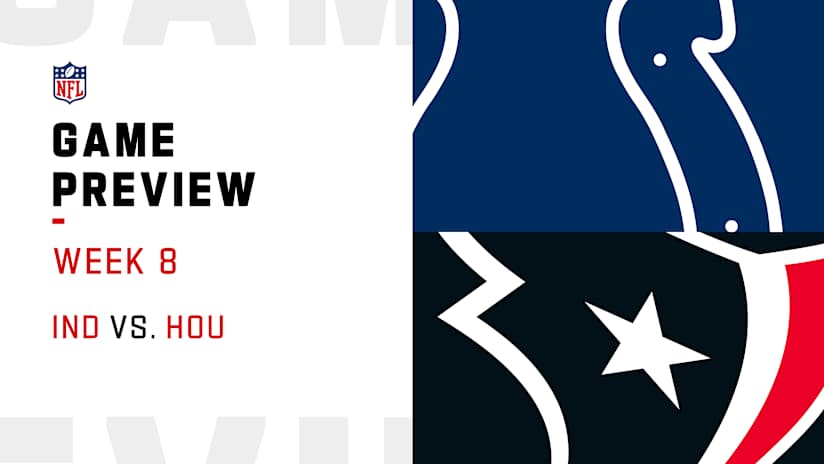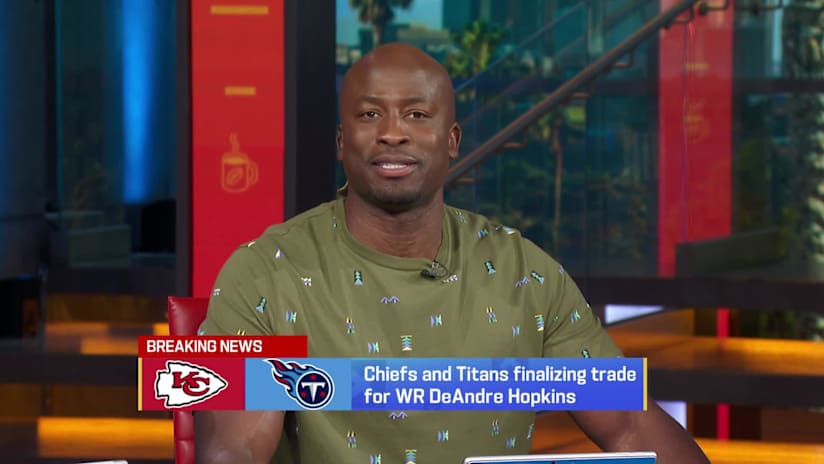Former NFL player and scout Bucky Brooks knows the ins and outs of this league, providing keen insight in his notebook. Today's installment covers:
But first, a clear-eyed assessment of a struggling young quarterback ...
It is time for the Indianapolis Colts to take a step back with Anthony Richardson. If this team truly prioritizes winning, Indy should bench the second-year pro in favor of veteran quarterback Joe Flacco.
Though the No. 4 overall pick of the 2023 NFL Draft was selected to become the face of the franchise as a dynamic dual-threat QB, Richardson is just not ready to start in this league right now. Keeping him on the field when he's clearly in over his head threatens to weaken second-year head coach Shane Steichen's credibility in the locker room, especially with the Colts sitting squarely in the playoff mix at 4-3, one game behind the AFC South-leading Texans heading into this Sunday's divisional showdown in Houston.
While I am not suggesting Indianapolis gives up on developing Richardson as a future starter, putting him on the field ahead of Flacco at this point makes it hard to espouse the meritocratic principles that drive the NFL's best teams. Through the first seven weeks of the season, Richardson is completing 48.5 percent of his passes with a 60.0 passer rating -- both marks rank dead last among qualified quarterbacks. He has twice as many interceptions (six) as touchdown passes (three), while averaging a meager 156.6 passing yards per game. Meanwhile, Flacco guided the Colts to two wins in his three appearances as an injury replacement, with the former Super Bowl MVP posting sparkling numbers in the process: 65.7 percent completion rate, 102.2 passer rating, 7:1 touchdown-to-interception ratio and 238.7 passing yards per game.
To be fair, the Colts knew Richardson would need some time to develop, considering the signal-caller logged just 13 collegiate starts at Florida. He was drafted as a freak athlete with immense upside, and the team hoped he could develop into a polished product under the tutelage of a quarterback guru who helped Jalen Hurts undergo a similar transformation. The opportunity to coach a 6-foot-4, 244-pound playmaker with 4.43 speed, a 40 1/2-inch vertical jump and spectacular arm strength prompted Steichen, GM Chris Ballard and the Colts to roll the dice on the project.
Theoretically, pairing an experienced quarterback developer with a prospect boasting extraordinary physical tools should produce a blue-chip player. Through a diligent developmental process, the gifted youngster can refine his skills and become a productive pro in a system designed to showcase his best qualities. For instance, Andy Reid took a chance on Patrick Mahomes in the 2017 draft, aggressively trading up to select the Texas Tech gunslinger with the 10th overall pick. But instead of immediately throwing Mahomes into the fire, Reid kept the first-rounder on the bench for nearly his entire rookie campaign. While veteran Alex Smith guided Kansas City on Sundays, Mahomes worked on his fundamentals and directed the scout team. The stress-free reps on the practice field enabled Mahomes to work through his mistakes away from the spotlight, leading to a more decisive and confident player taking the field when he was named QB1 in Year 2.
The Colts opted for a different approach, putting Richardson in the starting lineup from Day 1. But injuries limited him to just 173 snaps as a rookie. He's dealt with more health issues in his sophomore campaign, but even when he's played, it hasn't been pretty. I believe it's time for the Colts to hand him the clipboard, enabling him to learn from the sidelines while serving as an apprentice to Flacco.
Before you scream at me regarding AR's draft pedigree preventing the team from making this kind of move, the redshirt season isn't a foreign concept. Shoot, Jordan Love sat behind Aaron Rodgers for three years. And even after Love become the starter prior to last season, it still took him some time to get his bearings. Once he did, the young quarterback displayed confidence and scheme mastery, sparking a late-season run that helped Green Bay secure a playoff berth and a rollicking Super Wild Card Weekend win at Dallas.
In light of Richardson's bumpy start, the Colts should sit the second-year pro down to help him become a better player down the road. Given the opportunity to work on his craft without worrying about results, the 22-year-old could improve his footwork, mechanics and processing skills, working against the No. 1 defense in practice. He can master the nuances of Steichen's scheme, leading to quicker decisions and more aggressive play down the line.
If the Colts are genuinely committed to bringing out the best in Richardson as a franchise quarterback, they should put him on a redshirt plan until he's truly ready to take the reins. With Flacco at the helm and Richardson learning on the sidelines, Indy could balance its desire to win now with a quarterback development plan that benefits the franchise in the long run.
How does DeAndre Hopkins help Chiefs?
The Kansas City Chiefs won a second straight Super Bowl last season despite serious questions at wide receiver. They attempted to upgrade the WR room during the offseason, but significant injuries to free-agent acquisition Marquise Brown and second-year pro Rashee Rice have left Kansas City searching for answers at the position once again. Through the first seven weeks of this season, the Chiefs rank a modest 13th in scoring offense (24.3 ppg), with Patrick Mahomes averaging a career-low 231.5 passing yards per game while throwing a league-high eight interceptions.
Clearly, Andy Reid wanted to upgrade the pass catchers around Mahomes, spawning this week's trade for DeAndre Hopkins. Sending the Titans a conditional fifth-round pick, the Chiefs acquired a five-time Pro Bowler with seven 1,000-yard seasons and just 35 dropped passes in 1,525 targets during his 12-year career, per Pro Football Focus. With a 3.4 percent career drop rate, Hopkins gives the Chiefs a reliable chain mover to target on crucial downs.
"The biggest thing right now is his hands are phenomenal," offensive coordinator Matt Nagy said to reporters on Thursday. "He has really, really good hands. I think he's got some of the least amount of drops in the history of the NFL."
The veteran's exceptional ball skills and leaping ability make him extremely difficult to cover in the red zone. As Reid and Nagy retool the offense to accentuate Hopkins' talents as a pass catcher, Kansas City could showcase a quick-rhythm passing game with the bulk of routes targeted at 15 yards or fewer. With more ball-control concepts to support the Chiefs' fine defense, the back-to-back champs can thrive through complementary football. Look for Hopkins to use his veteran savvy and ball-winning ability on a bunch of routes at short and intermediate levels.
"He's played in a lot of games," Nagy said. "He understands and he's seen a bunch of different defenses -- that's valuable. Whether it's zone or man. He's a very good route runner; he understands leverages. And one of the things ... You see it on tape, you see it in interviews, but then when he's here, up close and live and in person, you see the confidence and the swag that he has. And I think that confidence can really penetrate, and you feel that with the other players."
While Hopkins is unlikely to turn back the clock to his prime years, when he dominated on the perimeter as a contested-catch specialist and big-play machine, the 32-year-old gives the Chiefs a reliable outside target to complement Travis Kelce in the passing game. And with Hopkins is already excitedly talking about "playing meaningful football in January," Kansas City just added more fuel for the three-peat.
Jerod Mayo needs to watch what he says
Last Sunday in London, the Patriots lost to the Jaguars -- who had entered the game with a 1-5 record -- by the score of 32-16. It was New England's sixth straight defeat, and the fourth time this year that the team was outscored by double-digit points.
Afterward, head coach Jerod Mayo made a comment that raised a lot of eyebrows:
"What I would say is, look, we're a soft football team across the board," Mayo said. "You talk about what makes a tough football team. That is being able to run the ball, that is being able to stop the run, being able to cover kicks. We did none of those today."
I understood the rookie head coach's frustrations. However, like the former linebacker, I have been in NFL locker rooms as a player -- and to me, Mayo committed a cardinal sin when he used the "s" word to describe his team.
Before I explain more, I should acknowledge that Mayo issued a clarification on Monday, saying he felt the team was "playing soft," and that he thinks the players are capable of again operating with the toughness he saw in training camp. And in their own comments to the media later in the week, many Patriots players admitted the need to perform better.
That said, it is not hard to imagine the ways Mayo's original statement might have set the team back.
When a coach offers public criticism like that (whether merited or not), it can seem like the head man is pointing the finger squarely at the players rather than including coaches and support staff among those responsible for the squad's shortcomings. It can also erode any team-first ethos that might have been previously established and suggest to the players that the coach's feelings toward them are conditional, dependent on whether they are winning on the field.
In football, commitment, accountability and trust are viewed as the cornerstones of team success. Quips like the one Mayo made could cost a coach credibility in the locker room and create a division between coaches and players, leading the coach to be isolated from the team.
Moreover, players might begin to evaluate themselves based on results instead of maintaining a process-driven approach built around established standards and ideals. By focusing on results instead of the process, a coach can create an emotional roller coaster for players by allowing things they cannot control to dictate their attitude and mood. Players might be tempted to skip steps in order to secure short-term success, abandoning the habits that lead to long-term consistency and dominance.
Mayo's legendary predecessor, Bill Belichick, knows and understands the process as a six-time Super Bowl-winning head coach who routinely turned undermanned teams into playoff contenders. He disagreed with his former player/assistant's assessment of the Patriots, particularly the defensive unit that kept the organization competitive in 2023.
"You know, defensively, the Patriots led the league last year in rushing defense. Yards per carry, No. 1 in the league. And this year, they're way down in the 20s. It's the same guys," Belichick said Monday. "They re-signed . They re-signed . Obviously, . Marcus Jones and have been healthy all year, which they were both on IR at this point last year. You've got , you've got , you've got Keion White, you've got . ... It's a lot of the same players, and in some cases, I would say more.
"I'm kind of hurt for those guys. To call them soft -- they're not soft. They were the best team in the league last year against the run. Those guys went out there and did it even though we couldn't score many points offensively. I feel bad for the defensive players on that one because that's a tough group. ... Those guys are all tough players; they'll strap it up and go."
Going forward, Mayo should reflect on his leadership methods and approach with a young squad desperate to win a game. And he should probably pause before stepping to the microphone and issuing any further comments that could potentially destabilize the team's psyche.


